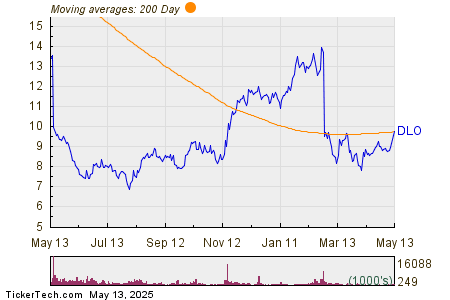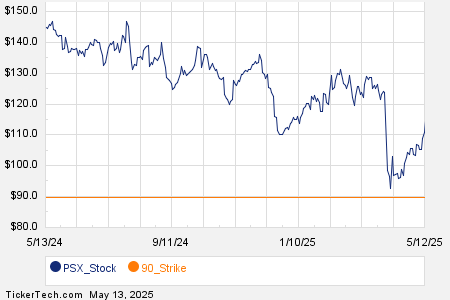Chemours Stock Review: Financial Concerns Raise Red Flags
Chemours (NYSE:CC) is currently priced at around $11, but our analysis suggests it is unattractive as a buying opportunity. Despite its low valuation, multiple significant concerns make CC an unfavorable investment.
Our conclusion stems from comparing CC’s valuation to its recent operating performance and both current and historical financial health. Evaluating Chemours across key metrics—Growth, Profitability, Financial Stability, and Downturn Resilience—indicates very weak operating conditions. Therefore, for investors looking for lower volatility alternatives, the Trefis High-Quality Portfolio has consistently outperformed the S&P 500, achieving returns over 91% since inception.
Valuation Comparison: Chemours vs. the S&P 500
When examining price ratios, Chemours appears cheap relative to the broader market.
- Chemours has a price-to-sales (P/S) ratio of 0.3, while the S&P 500 averages 2.8.
- Its price-to-earnings (P/E) ratio stands at 21.8, compared to 24.5 for the benchmark.
Revenue Trends of Chemours
Over the past few years, Chemours has experienced a decline in revenues.
- The company’s top line has shrunk at an average rate of 2.7% over the last three years, while the S&P 500 has grown by 6.2%.
- In the last 12 months, revenues dropped by 4.9%, down from $6.1 billion to $5.8 billion, contrasting with a growth of 5.3% for the S&P 500.
- Quarterly revenues also fell by 1.3%, recording $1.4 billion in the most recent quarter compared to the same period last year, which saw a 4.9% gain in the S&P 500.
Profitability Analysis of Chemours
Chemours’ profit margins are significantly lower than those of other companies within the Trefis coverage universe.
- Operating income for the last four quarters was $443 million, representing a poor Operating Margin of 7.7% compared to 13.1% for the S&P 500.
- Operating Cash Flow (OCF) during this period was $-633 million, indicating a negative OCF Margin of -10.9%, relative to the S&P 500’s 15.7%.
- Net Income for Chemours stood at $86 million, showing a Net Income Margin of only 1.5%, versus the S&P 500 which reports 11.3%.
Financial Stability of Chemours
The balance sheet of Chemours appears weak.
- As of the latest quarter, Chemours reported $4.4 billion in debt, while its market capitalization was only $1.6 billion, resulting in a Debt-to-Equity Ratio of 232.7%, compared to 21.5% for the S&P 500.
- Cash and cash equivalents amount to $713 million out of total assets of $7.5 billion, yielding a Cash-to-Assets Ratio of 9.5%, as opposed to 15.0% for the S&P 500.
Downturn Resilience of CC Stock
CC stock has shown impact levels slightly better than the S&P 500 during recent downturns. As observers hope for a soft landing for the U.S. economy, the concern remains about how severe another recession could be. Our dashboard examines performance during the last six market crashes.
Impact of Inflation Shock (2022)
- CC stock fell 36.1% from a peak of $36.16 on January 14, 2022, to $23.12 on March 7, 2022, while the S&P 500 experienced a decline of 25.4%.
- The stock fully recovered to its pre-crisis peak by May 3, 2022.
- Since then, it achieved a high of $44.79 on June 7, 2022, but currently trades around $11.24.
Covid Pandemic (2020)
- CC stock experienced a drop of 63.1%, falling from $19.70 on February 20, 2020, to $7.26 on April 3, 2020, against a 33.9% decline for the S&P 500.
- It recovered to its previous highest level by August 5, 2020.
Conclusion: Evaluating CC Stock
Overall, Chemours’ performance across the examined parameters reflects the following:
- Growth: Weak
- Profitability: Extremely Weak
- Financial Stability: Very Weak
- Downturn Resilience: Neutral
- Overall: Very Weak
Consequently, despite a low valuation, we find the stock to be unattractive, reinforcing the view that Chemours is currently a bad investment choice.
Given these factors, investors may consider sidelining CC stock for now and instead looking into the Trefis Reinforced Value Portfolio, which has shown solid performance against its all-cap benchmark.
The views and opinions expressed herein are those of the author and do not necessarily reflect those of Nasdaq, Inc.



